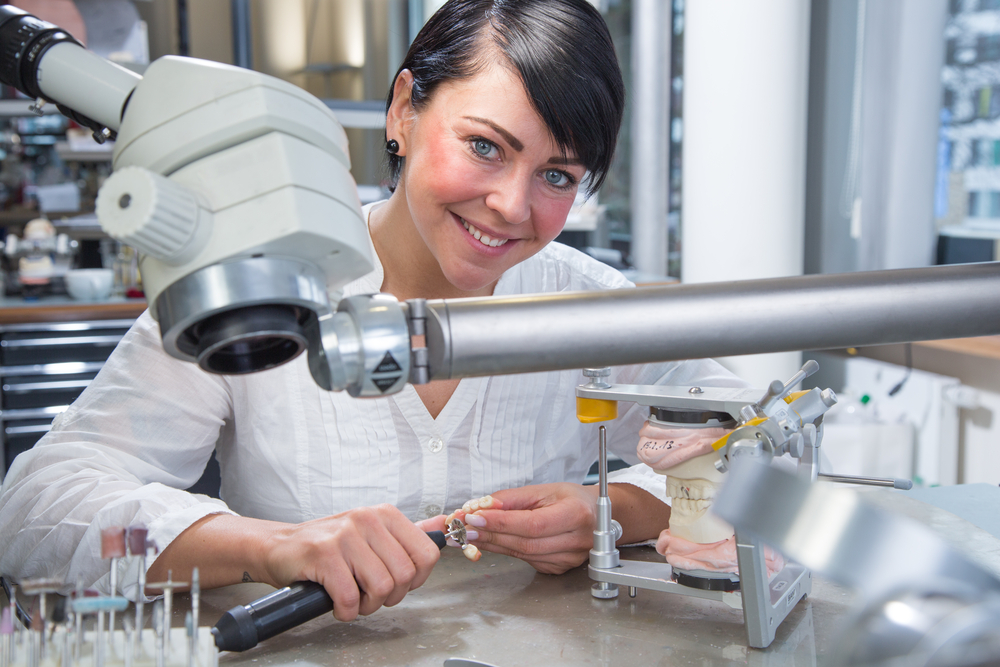Do you have a jar of old crowns collecting dust in the corner of your office? Maybe you forgot about them or just haven’t had the time to research how to sell your dental scrap. Refining dental crowns and bridges is easier than you think. With a little homework upfront, you can find a reputable refiner and receive a high payment for your dental scrap.
Here are the six steps to sell your dental crowns and bridges
1 – Search for the best dental scrap refiners
The amount you receive from a refiner for your scrap depends on the quality and integrity of the dental refinery. The difference between the returns can be significant enough to warrant spending some time researching.
Recently, one of our clients told us that he would get enough money to buy lunch for his staff whenever he sent his dental scrap in for refining. He was very happy with this; until one day when he tried a new refiner. This time, he received a payment that allowed him to not only buy lunch for his staff but also take his family on a vacation.
“The difference between the returns can be significant – as one of our clients told us, he received a payment that allowed him to not only buy lunch for his staff but also take his family on a vacation.”
So, how do you find the best refiner? Call several dental refiners and ask each one the following questions:
- How long have you been in business
- What is your turnaround time?
- What is your refining process?
- What are the charges per metal and are there extra fees? (watch out for minimum fees and assay fees.)
- Do you provide free, insured shipping?
Also, make sure that your dental scrap is actually tested for its metal content. Many dental refineries send sales representatives into busy dental offices and offer to pay cash for an estimate made on-the-spot. While this method is easy and convenient, you will rarely receive a fair payment for your scrap—and the difference may be significant.
Finally, make sure that the customer service representatives who you’ll be working with are easy to reach, and take the time to answer your questions. You don’t want to be in a situation where you send valuable dental scrap in for refining, and then can’t reach anyone at the company to answer your questions or concerns. Or worse, go around in circles in an interactive voice response system.
2 – Narrow down your list of refiners to two
After doing your research, you should have two quality refiners that you are comfortable with. At this point, you’re ready to do a test.
Think of this as an A/B test for refineries. Split your lot into two equal parts. Send one half to the first refiner on your list and the second half to the other refiner. For this test to work, it’s important to refrain from telling the scrap refinery that you’re testing them against another refiner. Some refiners may artificially boost your return higher to capture future business from you (which, admittedly, is nice in the short term but will likely lead to lower settlements in the future).
3 – Request a shipping container
If you’re not sure what size you need, your customer service representative should be able to guide you based on the items that you’re sending and the weight of the shipment. Make sure that your dental refiner uses a reputable shipping company and makes the process of sending your scrap in for refining, easy.
4 – Prepare your scrap
This should be an easy step. A good refinery won’t ask you to separate precious metal fused to teeth – it’s perfectly acceptable to send them as they are.
We do recommend, however, if you have both dental grindings and dental solids (crowns, bridges, etc.), to keep those items separate. Grindings and solids are processed separately. These items can be shipped together, just keep your solids in a bag or jar to prevent them from getting mixed in with the grindings.
5 – Send in your scrap
Once you receive the shipping containers from the dental refinery, you are ready to send in your scrap. We suggest that you list the contents of the shipment and the total weight, along with your contact information. When the lot is received at the refinery, the receiver will go through the lot to ensure that everything that is listed on the receipt is in the package. A high-quality refiner will contact you if there are any discrepancies.
Also, make sure to retain a copy of your tracking number with whichever shipping provider you are using. It allows you to track the shipment’s progress, and it’s helpful to have if there are any delays or questions about the shipment later.
6 – Receive your payment
Different refineries have different payment methods. At Cora, we will call you when your assay is complete and give you the amount. We will then go over who the check should be made out to and where to mail it.
What happens if I’m not happy with my return?
We don’t experience this problem often, but sometimes it does come up. We have a 100% satisfaction guaranteed policy. If you’re not happy with your return, we will return all your scrap metal at no cost. But please keep in mind that dental refining is a destructive process—your items will likely be returned in the form of a metal bar. In the refining process, we melt the scrap to create a homogenous metal bar to take a sample from. This is how we accurately determine the metal content of your dental scrap.
“We have a 100% satisfaction guaranteed policy. If you’re not happy with your return, we will return all your scrap metal to you at no cost.”
As you can see from the steps above, sending in your crowns and bridges for refining is a simple process. Remember to do your homework and ask questions upfront. When you’ve narrowed your list of the best dental refineries, select two and run a comparative test. Based on the results of that test, you should be able to find a quality dental refiner for your future refining needs. If you follow the steps, you’ll be able to send in your scrap with peace of mind and you will likely have a positive refining experience.
If you have questions about how to sell your dental scrap, let us know. We’d be happy to help you.

